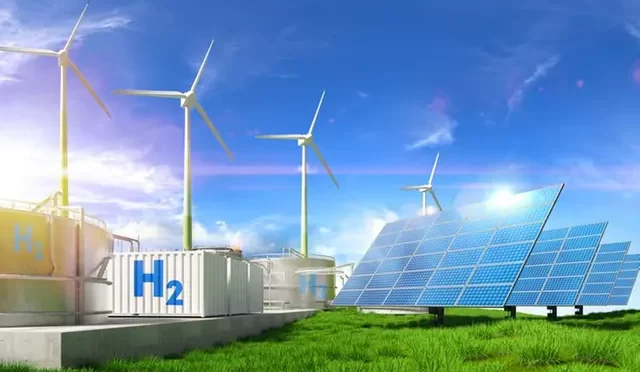Wind energy has emerged as one of the most promising renewable energy sources in recent years, with its potential to provide clean, sustainable, and abundant power. However, the intermittent nature of wind energy has posed a significant challenge to its widespread adoption, as it requires efficient storage solutions to ensure a stable and reliable power supply. One innovative approach to address this issue is the conversion of wind energy into hydrogen, a versatile and clean energy carrier that can be stored and transported with relative ease. This article explores the potential of harnessing wind energy storage through hydrogen conversion technologies, shedding light on the benefits, challenges, and future prospects of this promising synergy.
The idea of converting wind energy into hydrogen is not new, but recent advancements in technology have made it more feasible and cost-effective. The process involves using electricity generated by wind turbines to power electrolysers, which split water into hydrogen and oxygen through a process called electrolysis. The hydrogen produced can then be stored in tanks or underground caverns, transported through pipelines, or even converted back into electricity using fuel cells when needed. This flexibility makes hydrogen an attractive option for storing and distributing wind energy, as it can be used in various applications, such as transportation, heating, and power generation.
One of the main advantages of using hydrogen as a storage medium for wind energy is its potential to decarbonize multiple sectors of the economy. As a clean and versatile energy carrier, hydrogen can replace fossil fuels in various applications, thereby reducing greenhouse gas emissions and air pollution. For instance, hydrogen can be used as a fuel for vehicles, replacing gasoline and diesel, or as a feedstock for industries such as steel and chemicals, which currently rely on carbon-intensive processes. Moreover, hydrogen can be used to store excess renewable energy, enabling a higher penetration of wind and solar power into the grid and reducing the need for backup fossil fuel power plants.
Another benefit of wind energy storage in hydrogen is its potential to enhance energy security and resilience. By storing excess wind energy in the form of hydrogen, countries can reduce their dependence on imported fossil fuels and mitigate the risks associated with fluctuations in energy prices and supply disruptions. Furthermore, hydrogen can be stored for long periods without significant losses, making it an ideal solution for seasonal energy storage and ensuring a stable power supply during periods of low wind or solar generation.
Despite the numerous advantages of wind energy storage in hydrogen, there are also challenges that need to be addressed to fully realize its potential. One of the main hurdles is the relatively high cost of electrolysis and hydrogen storage infrastructure, which can be a barrier to large-scale deployment. However, ongoing research and development efforts are expected to drive down costs and improve the efficiency of these technologies in the coming years. Additionally, the widespread adoption of hydrogen as an energy carrier requires the development of a comprehensive hydrogen infrastructure, including pipelines, refueling stations, and conversion facilities.
In conclusion, wind energy storage in hydrogen holds great promise as a solution to the intermittency challenge of renewable energy sources and as a key enabler of a low-carbon, sustainable energy future. By converting excess wind energy into hydrogen, we can unlock the full potential of this abundant and clean power source, while simultaneously addressing pressing environmental and energy security concerns. Continued investment in research, development, and deployment of hydrogen conversion technologies, as well as supportive policies and regulations, will be crucial to harnessing the synergies between wind energy and hydrogen, paving the way for a more resilient and sustainable energy system.


